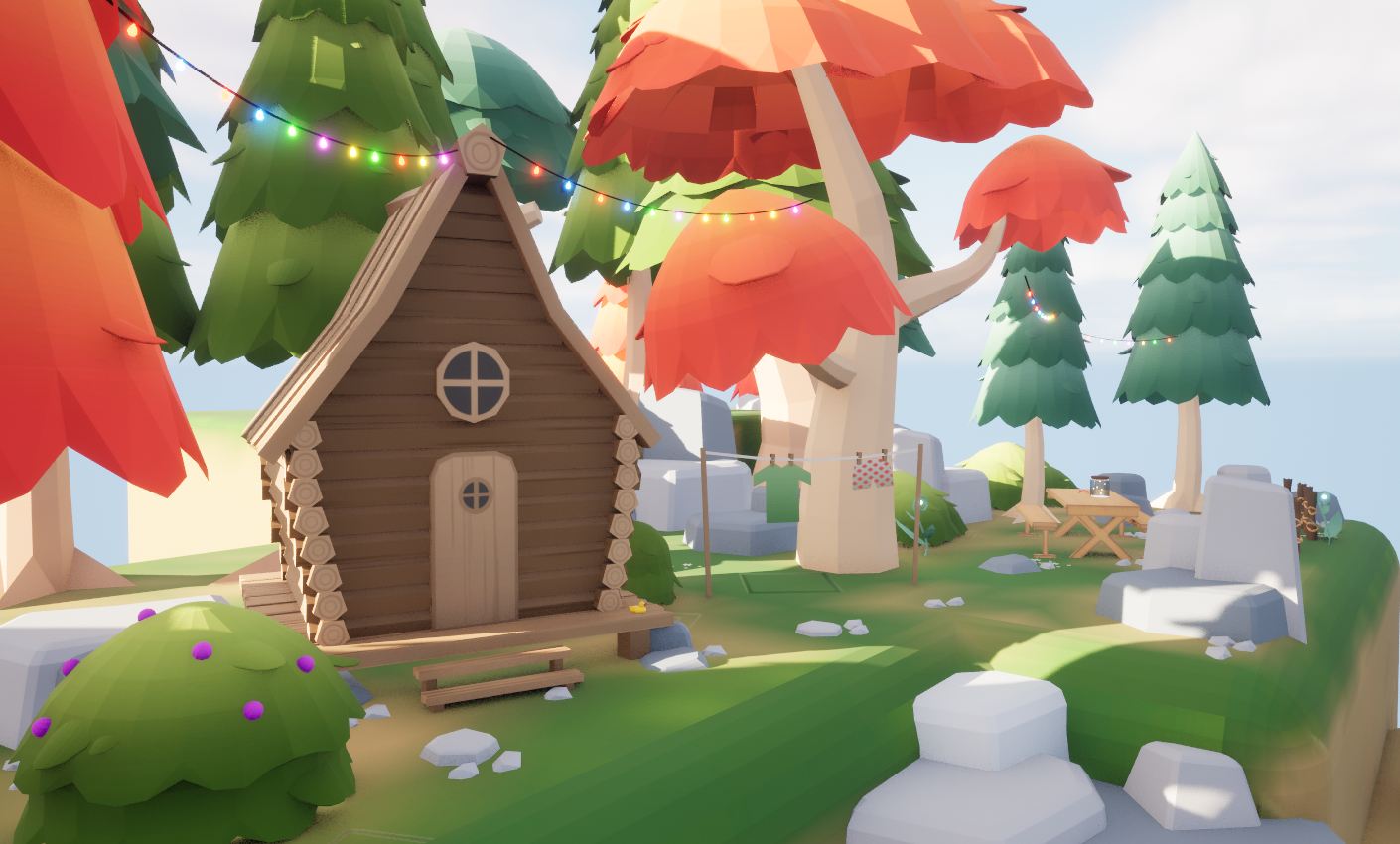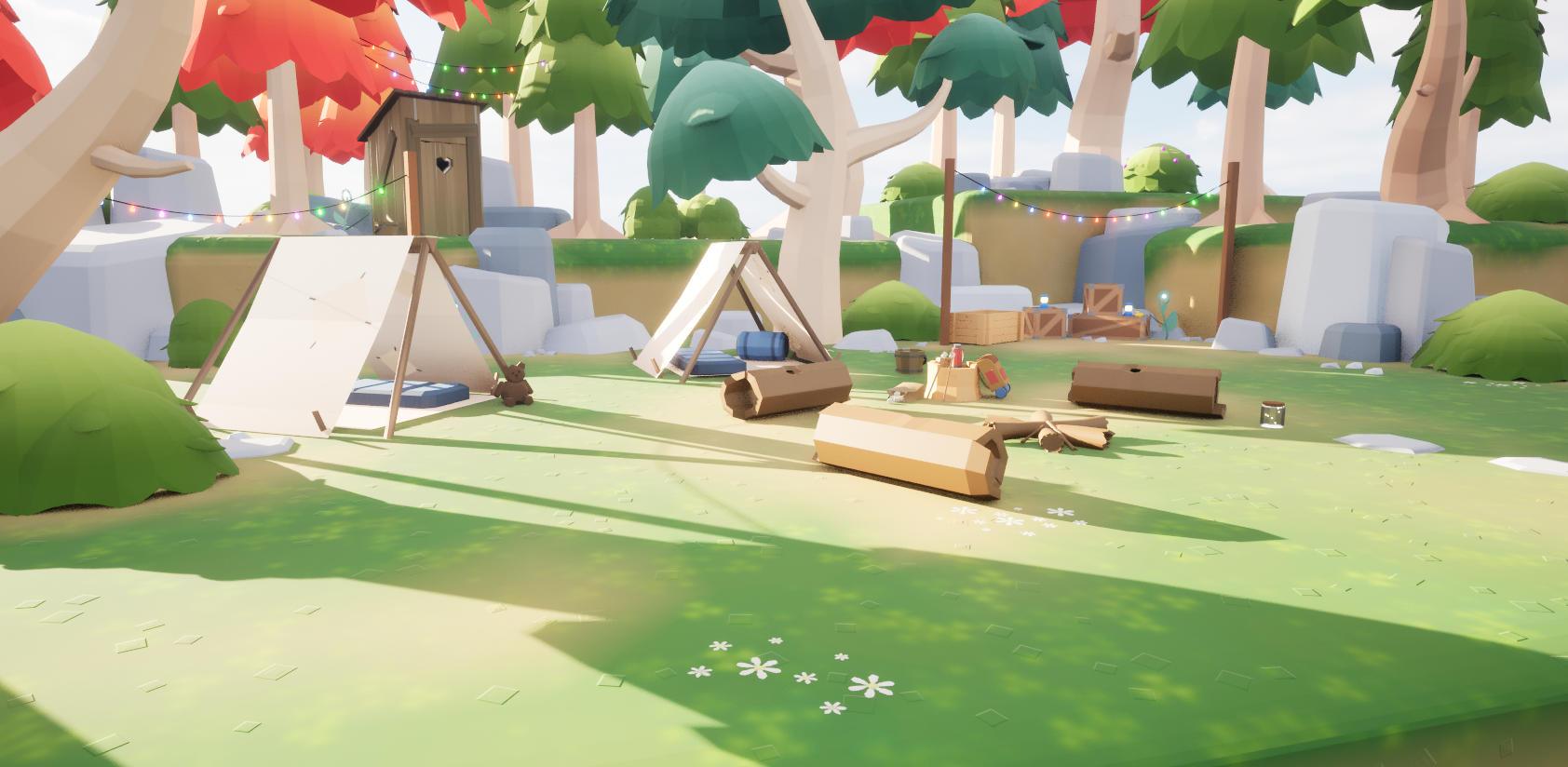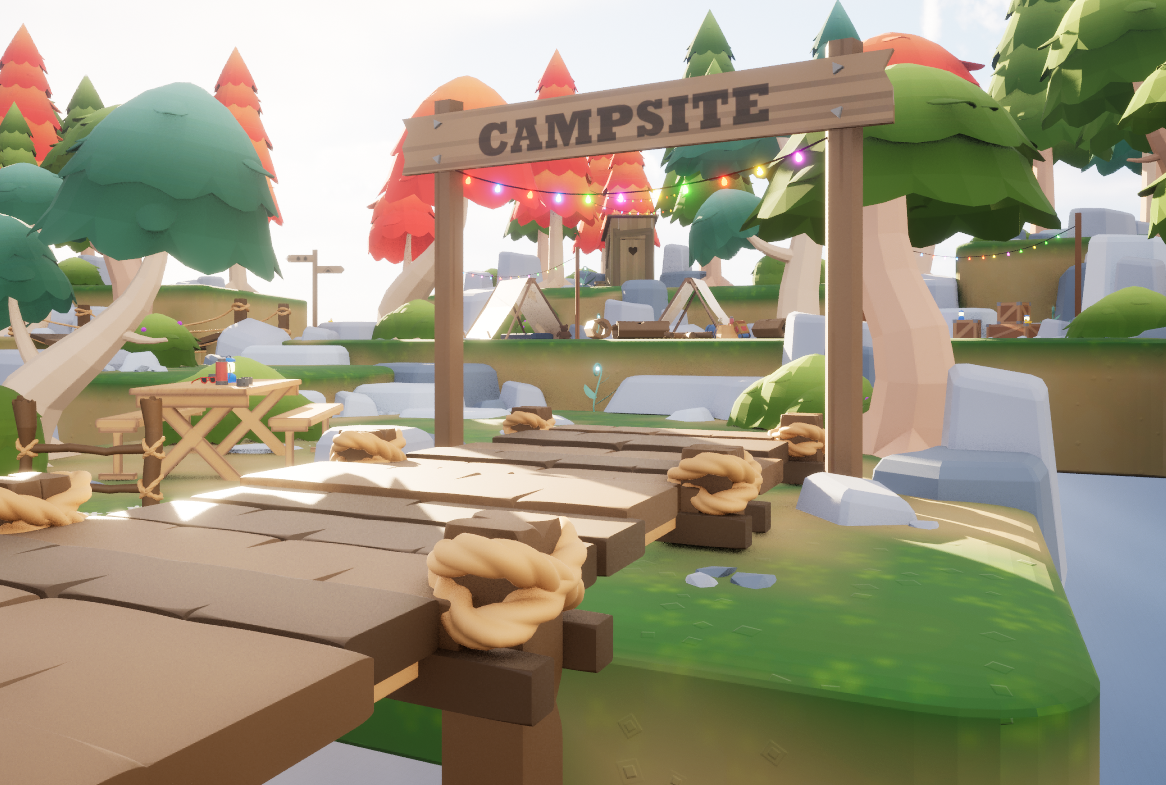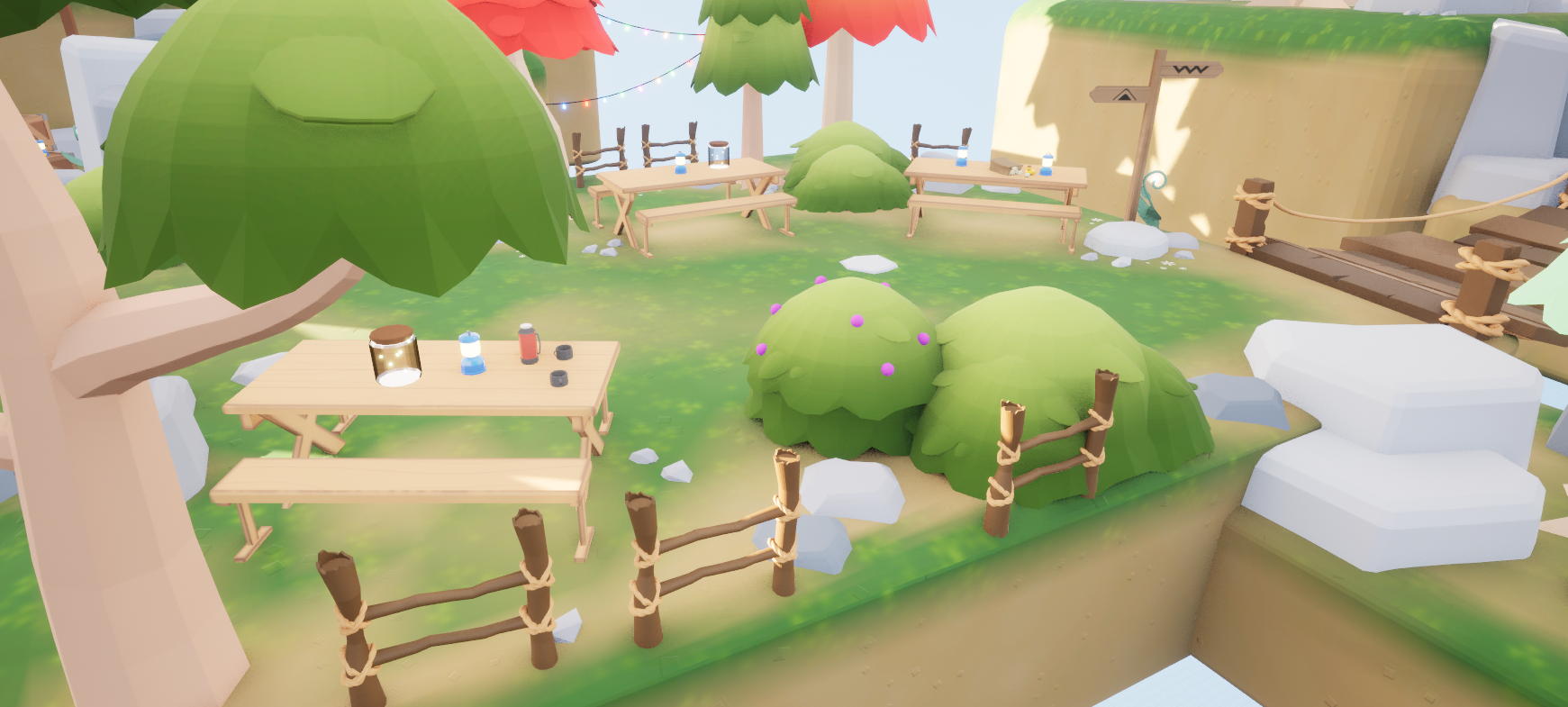
Skills: Project Management / Creative Director / Level Design / Miro / Trello / Unreal Engine
Cozy Campsite was not just an opportunity for me to grow as a project manager, but also a chance to embrace my role as a level and narrative designer. My inspiration came largely from one game in particular that I loved growing up; Animal Crossing, as well as mobile games such as Cat Island and Penguin Isle. The brief challenged us to create a management game. In our design, the vision for the game was that players could grow their campsite’s success and unlock new islands.
For the level design, I conceptualized three main areas where players could explore and gather resources at the start of their camp management journey: wood from the forest, berries and fish from the sea, and the campsite nestled in the middle of each island. These resources formed the core gameplay loop, with the vision of players being able to grow their campsite and upgrade it overtime.
As the level designer, I focused on ensuring the gameplay flow was smooth and well-balanced. To achieve this, I created several mock-ups in Photoshop to visualize and test various layouts. These mock-ups, which you can see below, helped refine my ideas and ensured a joyful experience for the players:
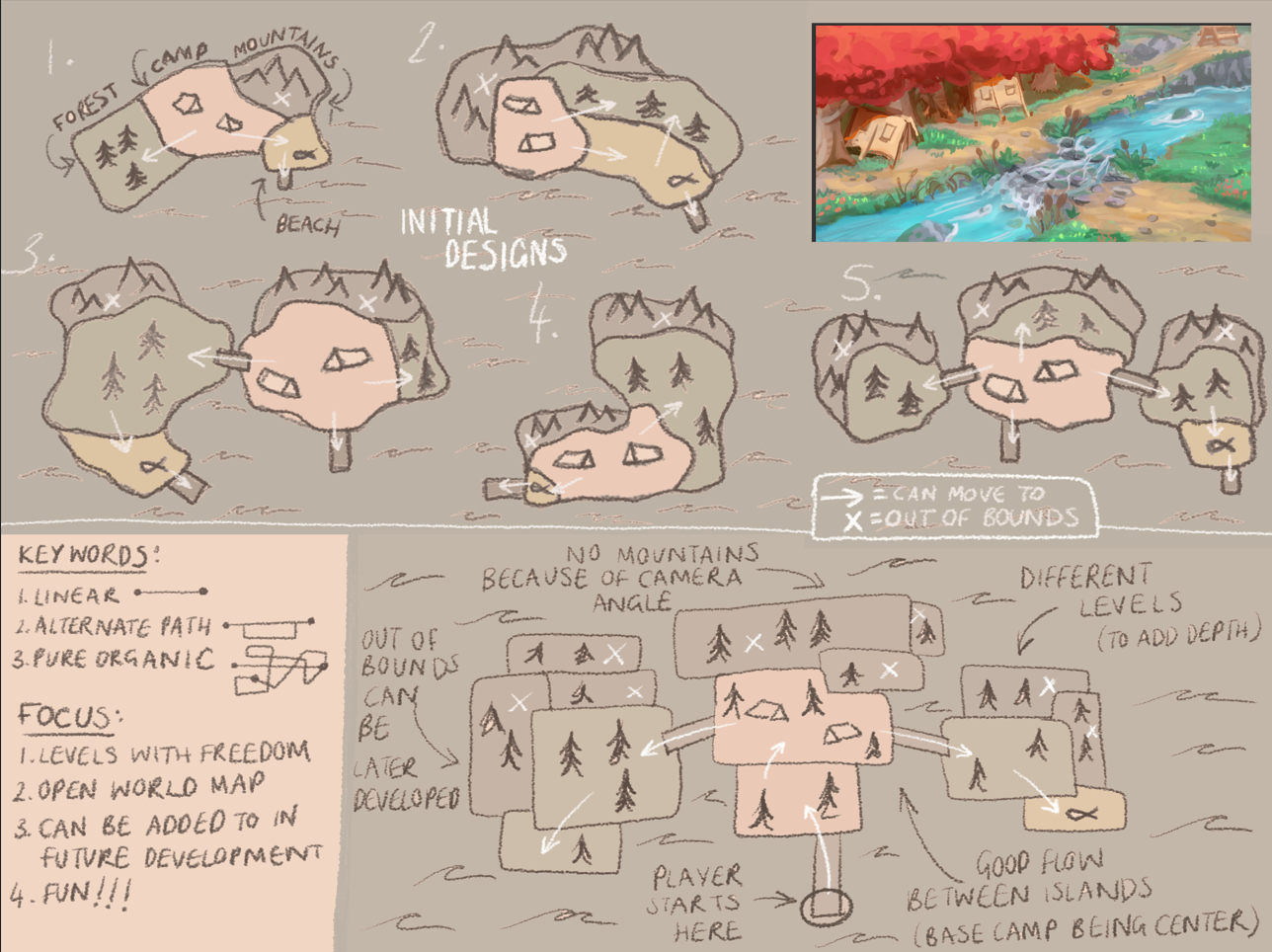
After exploring various approaches and concepts for the level, I brought the finalized concept into Unreal Engine, where I grey boxed the three islands. I sought feedback from my teammates and friends, and tested the level myself, making adjustments as needed. Given the one-week game jam timeframe and my satisfaction with the core level design, I quickly moved on to fleshing out the environment. This involved adding props, ensuring proper scaling, and fine-tuning the overall layout.
The game’s camera angle was set to 2.5D, so I aimed to enhance the level’s depth and flow. As I continued to flesh out the level, I used rocks as a way for player navigation across the islands to allow easy navigation. Through trial and error — experimenting with the placement of rocks, and by conducting numerous playtests — I refined the design to achieve a level that not only flowed smoothly but also felt appropriately scaled for exploration.
To ensure a polished experience, I invited friends to playtest the level before sharing it on GitHub with my teammates. During these playtests, I addressed any issues that arose, such as characters being unable to jump onto a platform they were supposed to reach, or accessing areas they weren’t intended to. After each round of testing (and there were several), I made appropriate adjustments and continued to enhance the level with additional details and set dressing.
I also worked with my teammates to create specific props that would enrich both the level design and the game’s cosy narrative. For example, we hid collectible rubber ducks around the level for players to find, adding a fun and whimsical element. Smaller details, like a washing line outside the player’s cabin, contributed to the sense of immersion and comfort that defined the game’s aesthetic.
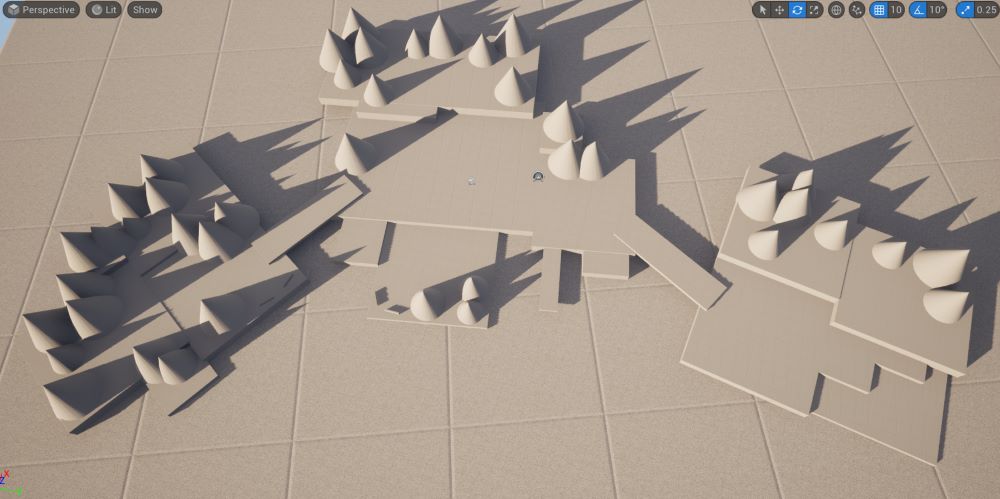
Grey boxing of level design

Fleshing out the islands
Since our target audience was younger players (Ages 12 and above), we aimed to tap into our playful, childlike sides. This also influenced the level design, which we kept simple, allowing our younger audience to fully enjoy and engage with the game.
It’s the smaller details, I believe, that truly tie everything together. While they may not always catch the attention of every player, these subtle touches help flesh out the level, adding layers of narrative and enjoyment through mise-en-scene. In some cases, the details aren’t intended to be noticed, but rather allow for complete player immersion. For example, we were inspired to include a version of Shrek’s outhouse seen in the opening of the film, Shrek. This fun Easter egg not only provided our team many laughs (And trust me, we had plenty of laughs while creating this game!), but we hoped also our audience. These small, thoughtful additions were essential to crafting a rich and compelling environment for players to explore, and not only that, it was one of the factors that spurred our team on to create and finish Cosy Campsite.
Below are some of the beauty shots I captured of the level design:
